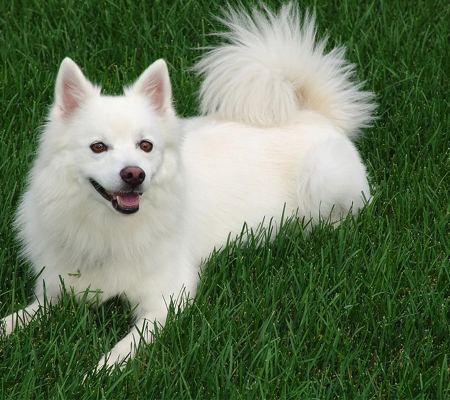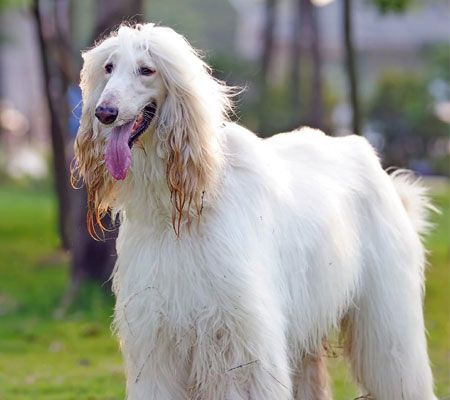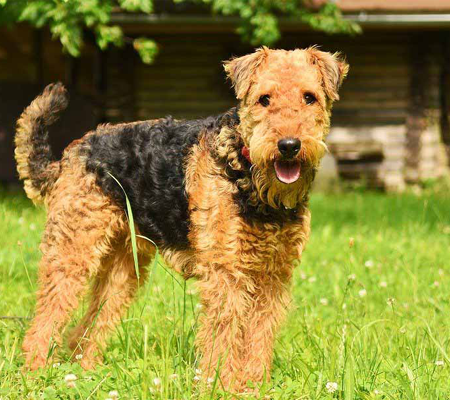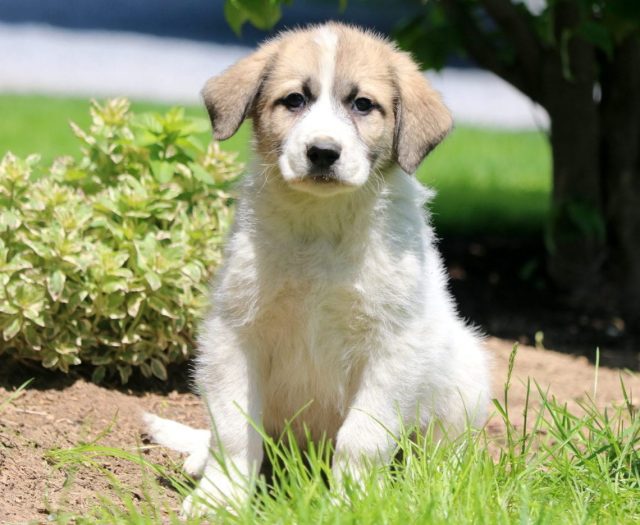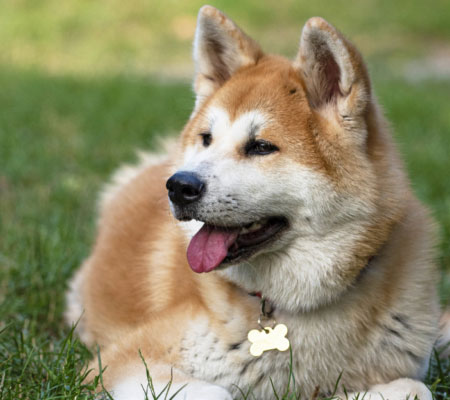In a comprehensive brains-and-beauty combination,
the American Eskimo Dog combines remarkable good looks with a quick and sharp
intellect. Eskies are neither shy nor aggressive, yet they are constantly
vigilant and sociable, but cautious when establishing new companions. The American
Eskimo Dog is available in three sizes: regular, miniature, and toy, with
heights ranging from 19 inches to 9 inches at the shoulder. A dense, gleaming
white coat with a lion-like ruff across the chest and shoulders; a smiling face
with a black nose, lips, and eye-rims conveying a keen, intelligent look; and a
plumed tail draped over the back are all distinguishing features. Some Eskies
have markings that are described as 'biscuit cream.' They walk with a confident
and nimble stride. Eskies are gregarious creatures that might develop negative
behaviours if they are ignored or undertrained; yet, they are adamant about
being a part of the family. The smart, kid-friendly Eskie almost originated the
phrase "ready to please" as one of the most trainable breeds.
American Eskimo Dog Highlights
Breed Size
Small
Nature
Gentle, Friendly, Playful, Outgoing, Willful
Energy Level
Active
Intelligence
High
Barking Level
When Necessary
Coat Length
Long, Medium
Breed Group
Toy
Droll Amount
Low
Good with
Familes, Children, Dog
Feed Level
Medium, High
Colour Type
White, Biscuit
Other Facts
They Originated in Germany,They Became Circus Dogs.
Dog History
The Eskie, or American Eskimo Dog, was developed
by German immigrants in the upper Midwest of the United States, not by Eskimos.
German farm proprietors in Minnesota, Wisconsin, and Ohio introduced German
spitz dogs, an all-around farm dog.
The German spitz, like most spitz breeds,
featured a curled tail, a thick coat, and pointed ears. Over time, the species
evolved into its bright all-white variety, and its endearing appearance and
quick wit gained it a spot in circuses and theatrical acts. An American Eskimo
dog named Pierre, a tightrope walker from the Barnum & Bailey Circus, was
one of the most renowned canines of all time.Due to anti-German prejudice, the
name of the German spitz breed was altered after World War I. The name "American
Eskimo" was selected to commemorate the same-named Ohio breeding kennel.
Despite the fact that the breed has been used as an all-purpose farm dog in the
Midwest for decades, the AKC officially recognised it in 1995.
Although American Eskimo dogs are still outstanding training companions for tricks, obedience, agility, and other activities, they are more commonly maintained as pets than working farm dogs.
10-14 inch 8-14 kg 10-13 year
Height

Weight

Life Span
Health and Care
Eskies are known for being "active"
dogs who require far more exercise and mental stimulation than other petite,
white, fluffy breeds such as shih tzus and bichon frises. Unlike those breeds,
Eskies were once used as working dogs. Give your dog an hour of exercise each
day, as well as three different training sessions each week. Toys that disperse
food and trick training are both entertaining methods to keep your dog's mind
active.
Dog Breed Care Tips and
Important Instructions
Exercise
For some dogs, a stroll or even a game of fetch
isn't enough; they require mental as well as physical stimulation. This breed
quickly becomes disruptive and noisy if not given enough exercise and
stimulation. Bark collars may stop your dog from barking, but they're more
likely to create misdirected irritation in the form of digging, gnawing, or
other distress behaviours. Hikes, exercise walks, and dog sports are all good
ways to keep your American Eskimo dog happy.
Grooming
Grooming American Eskimo dogs necessitates
regular care since this petite, hairy breed may rapidly get out of control.
Brushing these dogs many times a week will help keep their hair under control
and prevent shedding. Mats around the harness, collar, ears, and rump should be
worked out with great care. Rakes, bristle brushes, rotating-tooth combs, and
wire pin brushes are all common grooming equipment for long-haired
double-coated dogs. Even in the summer, don't shave Eskies since it will
destroy their double coat and impair their capacity to cope with heat and cold.
Training
Because American Eskimo dogs are naturally
stubborn, you'll need to train them or you'll end up with an obstinate puppy.
Socialization training will be required for puppies, and obedience training may
be required for older adopted Eskies. With an Eskie, keep training lighter and
enjoyable, and don't expect perfection from this breed. If a session becomes
too difficult, try to make it easy or end it for the day.
Diet and Nutrition
Despite its innate athleticism, the American
Eskimo dog is prone to weight gain. This might be related to genetics or the
fact that their thick fur makes it difficult to see if they're gaining weight.
You may get a sense of your dog's genuine size by rubbing its ribs with your
hands. You should be able to readily feel the definition in your dog's hips and
a few ribs, but they shouldn't protrude.
Puzzle feeders let your dog relax and burn off
energy while still allowing him to enjoy his high-quality dog food. Avoid
feeding this breed high-fat foods since it may raise their diabetes risk, which
is already high.
Feeding
The American Eskimo is an active dog that
requires a diet that matches its level of activity. You should feed the puppy
1-2 cups of food every day, divided into two pieces. This will be sufficient,
as there will be some snacks during the day. However, do not overfeed them as
this will simply cause them to gain weight.
The adult American Eskimo requires 3-4 cups of
food each day, divided into three meals. If it engages in frequent rigorous
exercise, the amount of food it consumes on a daily basis should be raised. If
they are given less than what is necessary, they will grow thin, and if they
are given more, they will get obese, both of which are undesirable outcomes.
Fun Facts
- They Originated in Germany
- They Used to Be Herders and Guard Dogs
- They Became Circus Dogs
- An Eskie Was the First Dog Known to Walk a
Tightrope
- They Come in Three Sizes
- They Come in “Biscuit” Color
Home Training Tips and General
Information
Begin right away. The first day of school for
your Eskie puppy is the day you bring him home. Begin establishing excellent
conduct in him as soon as he enters through the door so that he understands
what is expected of him. Because Eskie pups are bright and learn new things
quickly, don't miss out on the chance to teach him excellent manners at a young
age. Basic obedience instructions like seat, down, and come assist establish a
foundation of control, allowing you to intervene when additional problematic
behaviour arises.
Be forceful and constant in your approach.
Because of his intellect, the Eskie is a boundary tester. Assert your dominance
over your dog and don't allow him get away with anything. One or two "just
this time" mistakes will label you as a pushover, which your dog will exploit.
Stay firm on what is and is not allowed.
To promote excellent conduct, use positive
rewards rather than negative attention. Yelling at your Eskie puppy will just
make him fearful of you and less inclined to listen to you. Treats, play time,
and praise should all be used to reward excellent conduct. Ignore the
inappropriate conduct or just say "NO!" to gain his attention.
Redirect him to the behaviour you want him to exhibit and praise him for it.
To maintain his attention, use a leash. Although
leash training is vital in and of itself, having him under control can help you
concentrate his attention where you want it. Keep the leash short and give him
a little pull to deter negative behaviour or to draw his attention to a
command. Hold him near to your left knee as you walk to teach him to heel
rather than yank. Pull him back and alter directions if he attempts to go his
own way. As you travel together, he'll quickly learn to stay by your side and
follow your direction.
Keep his barking to a minimum. Eskies are barkers,
and their high-pitched cries may be annoying to anybody within hearing
distance. You won't be able to entirely stop him from barking, but you can
moderate it by appreciating his natural need to protect his house. Look at what
he's yelling about, then reassure him, "It's all right." Say
"Quiet" while making a noise that will attract his attention, such as
a training clicker or a soda can full of pennies. Making an attention-getting
noise will startle him out of barking, and he will identify the activity with
the word "Quiet." When he calms down, praise him for his wonderful
conduct.
FAQS
|
Is it possible to leave American Eskimo dogs alone? |
|
Even though an Eskimo Dog may be left alone for up to eight hours, if
bored or not given adequate exercise, he can become destructive. Because
barking is a normal behaviour for this breed, he may bark if left alone. |
|
Is it necessary to bathe my American Eskimo on a regular basis? |
|
Bathing and brushing are required on a regular basis for the American
Eskimo Dog. This clever dog can be washed as often as every two weeks up to
once every six weeks. Proper washing and drying practises are essential for
this double-coated breed to achieve a lovely coat. |
|
Is it true that American Eskimo dogs are cuddly? |
|
The top ten most lovable dogs in the world, according to PetMD, are
American Eskimo Dogs. These are loving, charming dogs who create deep ties
with their owners. American Eskimo Dogs require a lot of activity in addition
to their love of snuggling. |
|
Is it true that American Eskimo dogs are affectionate? |
|
In addition, they are attentive, sociable, loving, dedicated,
affectionate, and lively. They have a strong desire to please and make great
watchdogs and security dogs. When properly introduced, American Eskimo
Canines get along well with children and other dogs. Strangers might make
them nervous, but they normally warm up to them following an introduction. |
|
Are American Eskimo dogs devoted to their owners? |
|
The American Eskimo is a canine that belongs in a family. Eskies are
extremely devoted and require constant contact with their owners. They are
bright, yet may be obstinate. They make good watchdogs, however they have a
tendency to bark excessively. |
American Eskimo Dog Unique Name
| Male Name | Female Name |
|---|---|
| Bandit | Alexis |
| Bingo | Bianca |
| Captain | Birdie |
| Champ | Beau |
| Jake | Blossom |
| Johnny | Casey |
| Louie | Cleo |
| Max | Hannah |
| Pablo | Ibby |
| Rider | Jessie |
| Ringo | Liberty |
| Sammy | Morgan |
| Samson | Piper |
| Sarge | Samantha |
| TJ | Savannah |
| Comet | Stella |
| Baxter | Brodie |
| Cosmo | Buttercup |
| Truffles | Cisco |
| Winnie | Maple |

